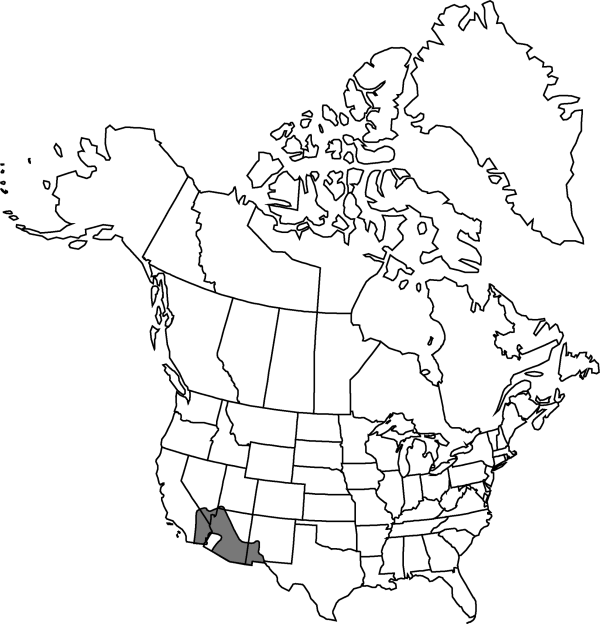Difference between revisions of "Opuntia chlorotica"
Proc. Amer. Acad. Arts 3: 291. 1856.
FNA>Volume Importer |
imported>Volume Importer |
||
| (One intermediate revision by the same user not shown) | |||
| Line 8: | Line 8: | ||
}} | }} | ||
|common_names=Pancake pricklypear | |common_names=Pancake pricklypear | ||
| + | |special_status={{Treatment/ID/Special_status | ||
| + | |code=F | ||
| + | |label=Illustrated | ||
| + | }} | ||
|basionyms= | |basionyms= | ||
|synonyms= | |synonyms= | ||
| Line 46: | Line 50: | ||
|publication title=Proc. Amer. Acad. Arts | |publication title=Proc. Amer. Acad. Arts | ||
|publication year=1856 | |publication year=1856 | ||
| − | |special status= | + | |special status=Illustrated |
| − | |source xml=https:// | + | |source xml=https://bitbucket.org/aafc-mbb/fna-data-curation/src/2e0870ddd59836b60bcf96646a41e87ea5a5943a/coarse_grained_fna_xml/V4/V4_249.xml |
|subfamily=Cactaceae subfam. Opuntioideae | |subfamily=Cactaceae subfam. Opuntioideae | ||
|genus=Opuntia | |genus=Opuntia | ||
Latest revision as of 22:57, 5 November 2020
Trees or shrubs, erect, 2–2.5 m, with spiny, well-defined trunk to 30 cm diam. Stem segments not disarticulating, blue-green, flattened, obovate to circular, 13–21 × 11.5–19 cm, nearly smooth, glabrous; areoles 7–10 per diagonal row across midstem segment, subcircular to elliptic, with basal ridge, 3–6 × 2.5–4 mm; wool tan, aging grayish white. Spines absent or usually in distal areoles to evenly distributed over entire stem segment, yellow, aging red-brown to blackish, straight or weakly curved, ± acicular, deflexed, or some erect in marginal areoles; larger spines 0–7 per areole, terete or basally flattened, 25–45 mm, usually accompanied by few straight to wavy bristle-spines. Glochids crowded in narrow crescent along adaxial margins, longer toward base of areole margins, subapical tuft absent or poorly developed, yellow, aging reddish brown, to 14 mm. Flowers: inner tepals yellow (sometimes with reddish blush near base), abaxially reddish streaked along midveins, broadly spatulate-apiculate, 18–30 mm; filaments white to yellow; anthers; style and stigma lobes white, yellowish, or pale green. Fruits red, barrel-shaped, 30–60 × 18–40 mm, fleshy (often mummifying), glabrous, spineless; umbilicus 6–9 mm deep; areoles 40–68. Seeds yellowish, 3.5–4 × 3–3.5 mm, 1.5–1.8 mm thick, reniform to subcircular, flattened, often warped; girdle protruding 0.1–0.5 mm. 2n = 22.
Phenology: Flowering spring–summer (Apr–Jul).
Habitat: Desert grasslands, woodlands, chaparral, desert flats, rocky ledges, hills, canyons
Elevation: 600-2400 m
Distribution

Ariz., Calif., Nev., N.Mex., Utah, Mexico (Baja California, Baja California Sur, Sonora).
Discussion
Opuntia chlorotica hybridizes with O. santa-rita in southeastern Arizona and with the hexaploid O. phaeacantha forming the tetraploid O. ×curvispina in areas of Arizona, California, and Nevada.
Selected References
None.
